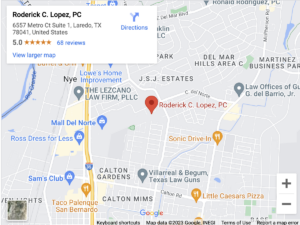
“Negligence” is a legal term of art that means something like “carelessness.” In a personal injury case based on negligence, you don’t allege that the at-fault party intentionally injured you. Instead, you allege that your injuries arose because of their careless behavior.
Legally, you must prove four elements to establish negligence liability: duty of care, breach of duty, damages, and causation.
Duty of Care

Every mentally competent adult owes a duty of care to everyone else. In layman’s terms, that means you must exercise common sense not to injure someone through careless behavior. If you are driving, you need to stop at every stop sign. You should not follow another vehicle too closely, and you should not drive the speed limit during a blizzard.
Due to their specialized training, certain professionals must exercise a heightened duty of care when engaging in their profession. A physician, for example, must utilize their training and experience when providing care to a patient. The law holds them to a higher standard of care than it would hold a passerby who rendered roadside first aid after a car accident.
It is not always easy to establish the defendant’s exact duty of care. Sometimes you need the testimony of an expert witness to make this decision.
Breach of Duty
“Breach of duty” is closely related to duty of care. All it really means is that the defendant’s behavior did not conform to their duty of care. If, for example, a physician had a duty to order lab testing, failure to do so would constitute breach of duty. Running a red light in traffic would constitute breach of duty. Breach of duty can mean doing something you weren’t supposed to do. It can also mean not doing something you were supposed to do.
Duty of care plus breach of duty equals negligence. Negligence alone, however, is not enough to establish liability. For liability to attach, you must also prove damages and causation.
Damages
“Damages” is a legal term of art that roughly means “losses.” Damages can be either tangible (economic) or intangible (non-economic). To recover compensation, however, you must prove a physical injury. Once you do that, the door opens for you to seek damages for non-economic damages as well.
Economic Damages
Economic damages are tangible losses that are easy to translate into dollars and cents. It is simple, for example, to put a dollar value on your medical expenses. Other expenses include lost work time (while you were in the hospital or at home recuperating) and incidental expenses such as child care or housekeeping services.
Non-Economic Damages
Non-economic damages are intangible losses that include:
- Pain and suffering, such as physical pain, emotional distress, and mental anguish. It includes both chronic and acute pain.
- Permanent disability, scarring or disfigurement.
- Permanent loss of an important bodily function.
- Emotional distress, including humiliation, anxiety and grief.
- Psychological trauma with physical symptoms such as depression or PTSD.
- Loss of enjoyment of life.
The spouse, parent, or child of the victim can also claim for loss of consortium, including a loss of affection, solace, comfort, companionship, society, assistance, emotional support, and love.
The value of non-economic damages can add up to far more than the value of economic damages.
Punitive Damages
In unusual cases, you can seek punitive damages on top of economic and non-economic damages. Courts are reluctant to award punitive damages, and they will only do so when the defendant’s behavor was outrageous. The standard of proof is higher for punitive damages than it is for economic and non-economic damages.
Causation
Once you have proven negligence (duty + breach) and damages, you have to link the two together if you want to establish liability. Causation is the link. There are two forms of causation, and you must prove both of them to establish liability.
Cause in Fact
Cause in fact, also known as “but-for” causation, is present if the injury would not have happened but for the defendant’s behavior. If you can honestly say that “If X hadn’t happened, Y wouldn’t have happened either”, then it is fair to say that X caused Y, at least with respect to cause in fact.
Proximate Cause
Once you prove cause in fact, you must also prove proximate cause. That means that the cause and effect relationship must have been close enough that it would be reasonable to expect the defendant to have foreseen the injury that occurred.
The classic case illustrating proximate cause is Palsgraf v. Long Island Railroad Company. In this case, a guard at a train station caused a package to fall onto the tracks. It just so happened that the package contained fireworks, which exploded and injured a woman standing quite some distance away.
The court ruled that proximate cause was not present because the guard could not have reasonably foreseen an injury to someone standing so far away from the package.
An Experienced Laredo Personal Injury Lawyer Can Help You Prove Negligence
Negligence isn’t necessarily easy to prove. Even if you do, an important issue remains: how much compensation are you entitled to? An experienced Laredo personal injury lawyer such as Roderick C. Lopez Personal Injury Lawyers, can maximize your chances of receiving every penny the at-fault party owes you. Even after deducting legal fees, you are likely to come out ahead. Contact us today at (956) 529-7336 for a free consultation.

